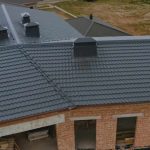
How to Choose the Best Roofing Material for Your Climate
Selecting the right roofing material is crucial for ensuring the durability, efficiency, and overall performance of your roof. Different climates pose unique challenges, and the roofing material you choose can significantly impact your home’s comfort and energy efficiency. This article will guide you through the factors to consider when choosing roofing materials based on your climate.
A Comprehensive Guide
Understanding Climate Zones
Before diving into specific materials, it’s important to understand the three primary climate zones:
Hot and Dry Climates: Characterized by high temperatures and little rainfall, these areas may experience extreme heat during the summer and cool nights in the winter.
Cold and Wet Climates: These regions endure heavy snowfall, rain, and chilly temperatures. Roofs in these areas must handle moisture and weight from snow accumulation.
Humid and Tropical Climates: Hot and humid conditions with significant rainfall define these climates. Roofs must resist mold, algae, and other moisture-related issues.
Factors to Consider When Choosing Roofing Materials
Durability: Choose materials that can withstand your local weather conditions. For example, shingles may not last long in areas with heavy rain or snow, while metal roofs can be susceptible to rust in humid climates unless properly treated.
Energy Efficiency: The right roofing material can help regulate your home’s temperature. Reflective materials, like light-colored tiles or metal, are beneficial in hot climates, while insulated options are better for cold regions.
Weight: Consider the structural integrity of your home. Heavier materials, like slate or clay tiles, may not be suitable for all structures, particularly those in areas prone to earthquakes.
Maintenance: Different materials require varying levels of upkeep. For instance, asphalt shingles need regular inspections and maintenance, while metal roofs are generally low-maintenance but may require periodic cleaning.
Cost: Factor in both initial costs and long-term investment. While some materials may be cheaper upfront, their longevity and maintenance needs could result in higher costs over time.
Best Roofing Materials by Climate
Hot and Dry Climates
Clay Tiles: Excellent for insulation and heat resistance, clay tiles reflect sunlight and keep homes cooler.
Metal Roofing: Lightweight and energy-efficient, metal roofs are resistant to extreme temperatures and can last for decades.
Asphalt Shingles: Affordable and widely available, they are effective if installed with adequate ventilation to prevent heat buildup.
Cold and Wet Climates
Asphalt Shingles: Popular in colder regions, they perform well in wet conditions and can handle snow loads, especially if properly installed.
Metal Roofing: Its smooth surface allows snow to slide off, reducing the risk of snow accumulation and ice dams.
Slate: Extremely durable and weather-resistant, slate is an excellent choice for areas with heavy snowfall. However, it is heavier and more expensive.
Humid and Tropical Climates
Metal Roofing: Resistant to mold and algae, metal roofs are ideal for humid environments. Ensure they have a protective coating to prevent rust.
Concrete Tiles: Durable and weather-resistant, concrete tiles can withstand heavy rainfall and offer good insulation.
Synthetic Roofing Materials: These are designed to mimic traditional materials while being lightweight and resistant to mold, making them a practical choice for tropical climates.
Additional Considerations
Local Building Codes: Always check local building regulations, as some areas have specific requirements regarding roofing materials and installation methods.
Aesthetics: Consider how different materials will complement your home’s architectural style and neighborhood.
Environmental Impact: If sustainability is important to you, look for eco-friendly roofing options, such as recycled materials or those with a long lifespan to reduce waste.
FAQs
What roofing materials are best for hot and dry climates?
In hot and dry climates, materials such as clay tiles and metal roofing are ideal. Clay tiles reflect sunlight, helping to keep homes cooler, while metal roofing is lightweight, energy-efficient, and resistant to extreme temperatures. Asphalt shingles can also be used but should be installed with proper ventilation to prevent heat buildup.
How do I know if a roofing material is suitable for cold and wet climates?
When selecting roofing materials for cold and wet climates, look for options that can handle heavy snowfall and moisture. Asphalt shingles and metal roofing are popular choices due to their durability and ability to shed snow. Additionally, materials like slate provide excellent weather resistance, though they are heavier and more expensive.
Are there eco-friendly roofing options available for humid and tropical climates?
Yes, there are several eco-friendly roofing materials suitable for humid and tropical climates. Options include synthetic roofing materials that mimic traditional styles while being lightweight and resistant to mold, as well as metal roofs with protective coatings to prevent rust. Additionally, consider green roofs with vegetation, which can improve insulation and reduce heat absorption.
Conclusion
Choosing the right roofing material for your climate is essential for ensuring the longevity and effectiveness of your roof. By understanding the characteristics of different materials and their suitability for your local weather conditions, you can make an informed decision that protects your home and enhances its value. Whether you’re building a new home or replacing an old roof, take the time to research and select the best option for your climate.





